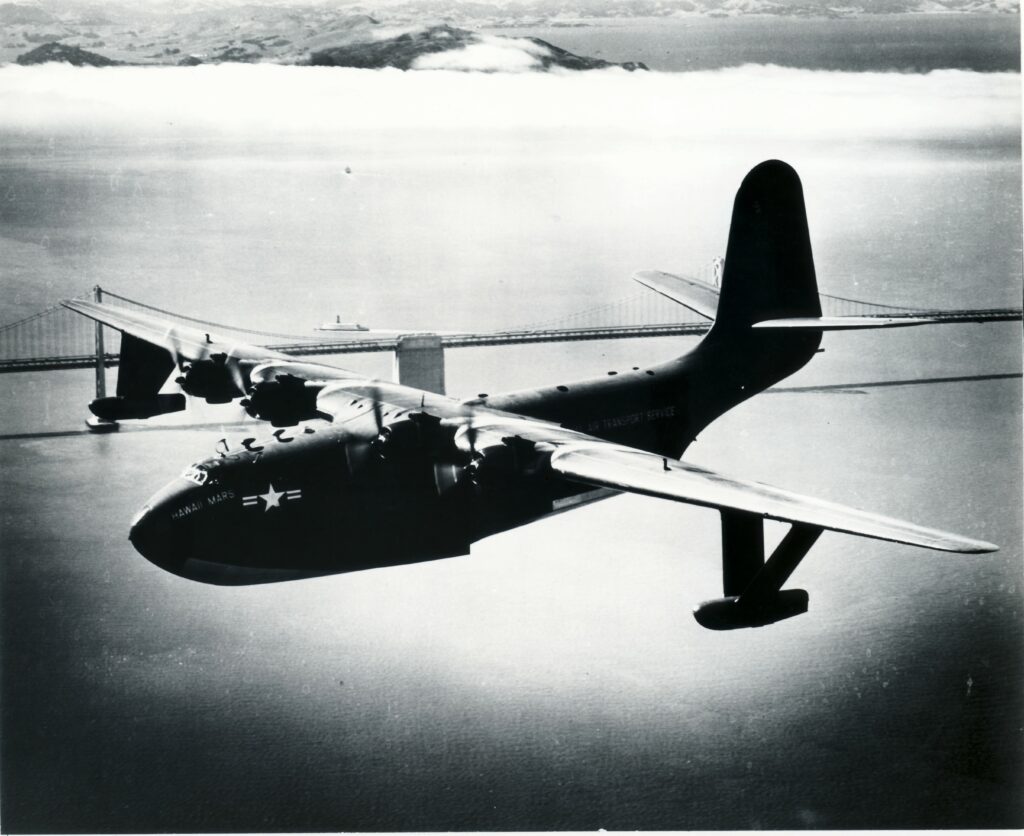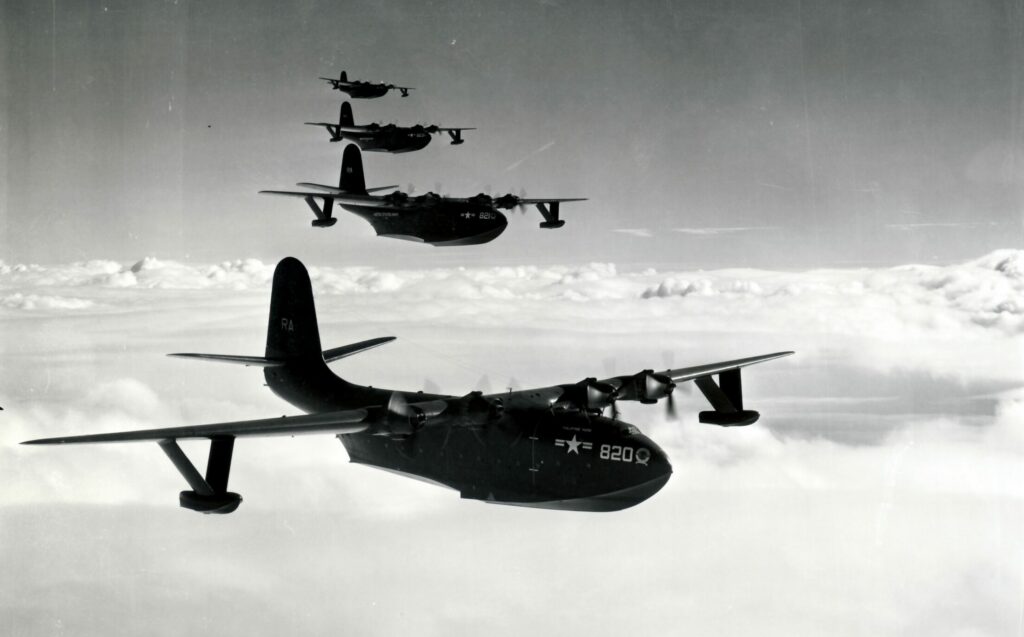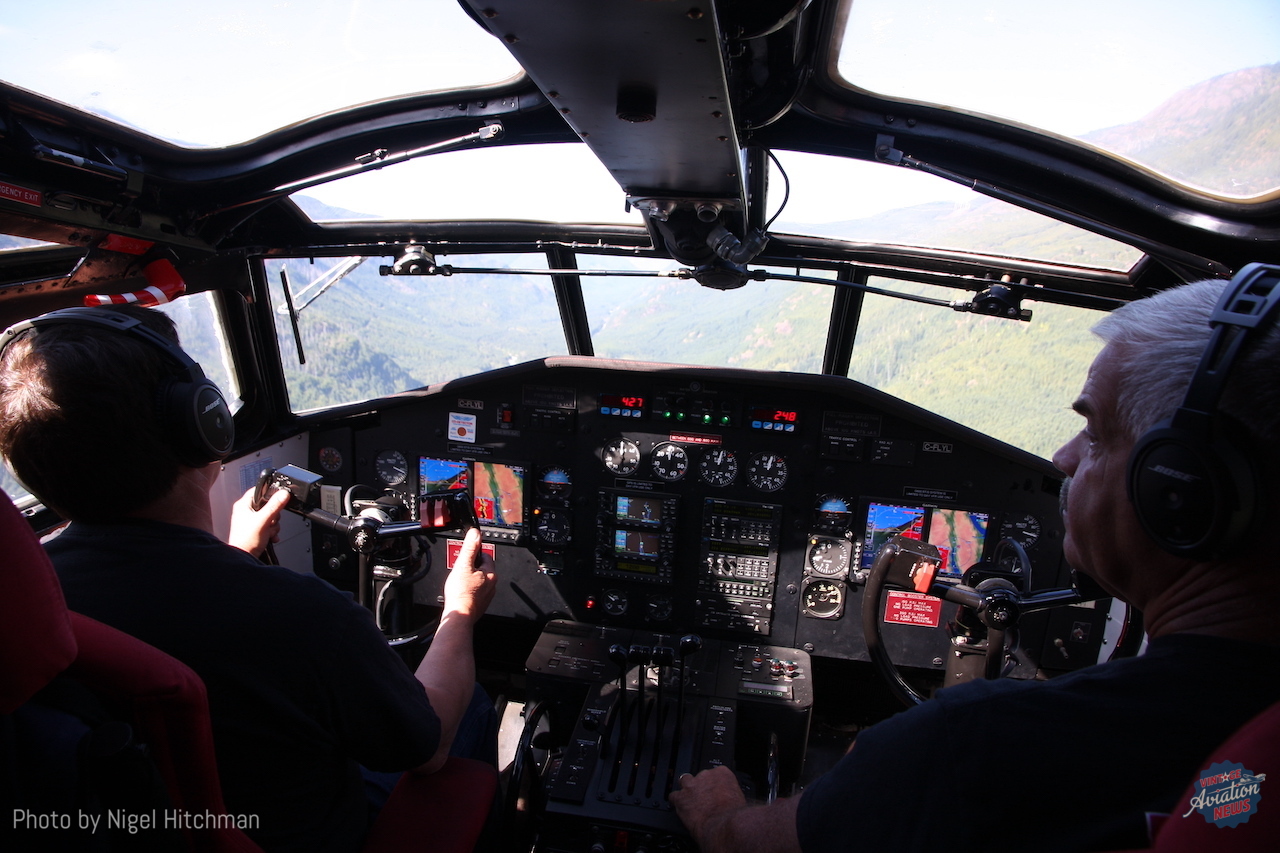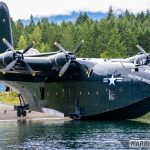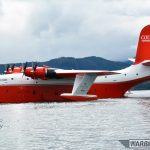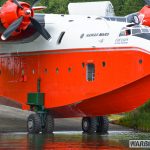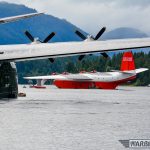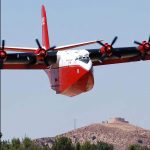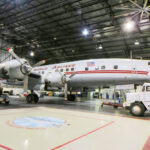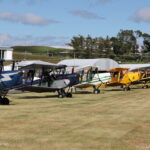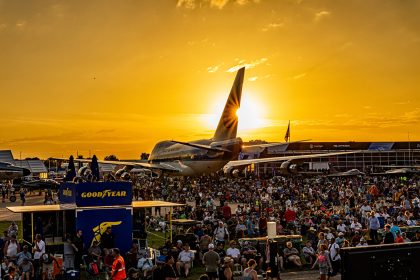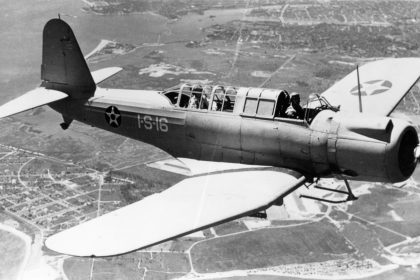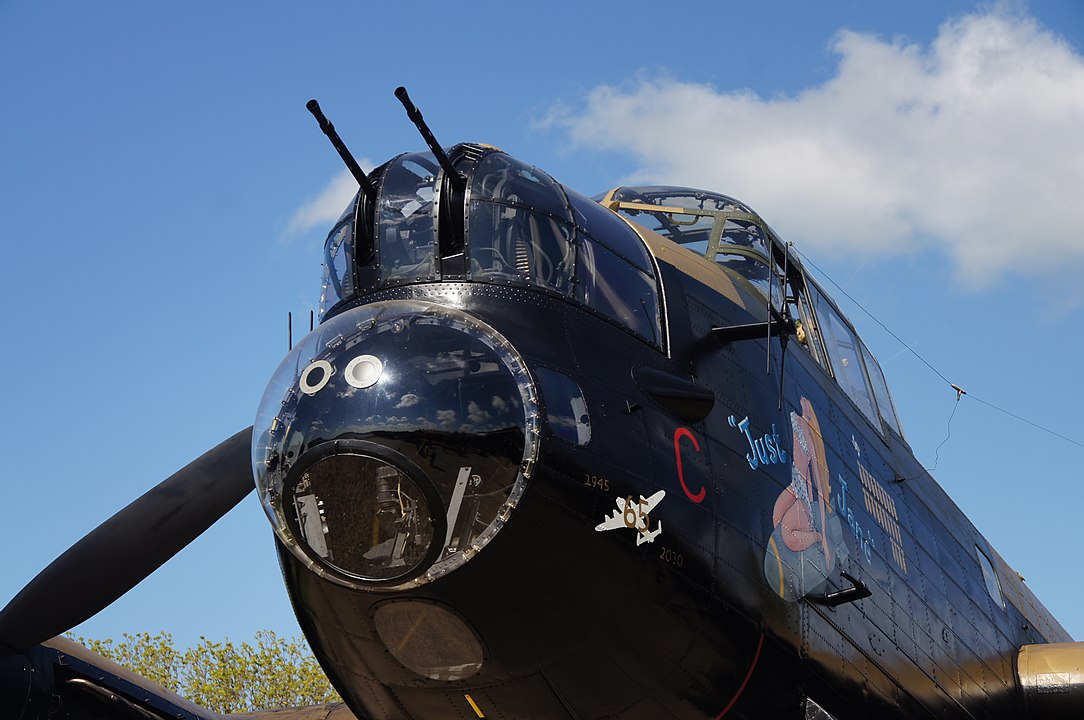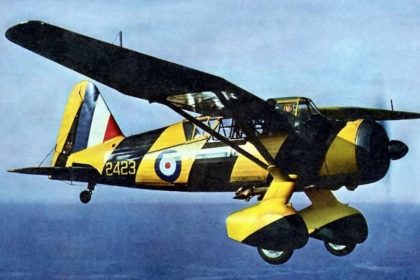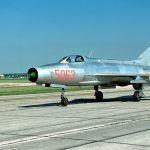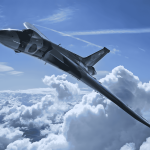By Nigel Hitchman
Back in Sept 2012, I planned a vacation trip to the Antique aircraft fly-ins at Blakesburg, Iowa, and Brodhead, Wisconsin, followed by a trip to Hay River to fly to Yellowknife on the Buffalo Airways scheduled service DC-3. Once I got my work roster, I figured I could stay a few days extra and I’d fly home from Vancouver instead of Calgary and take a trip to Vancouver Island where I hadn’t been since a brief day trip to Sproat Lake in 1989.
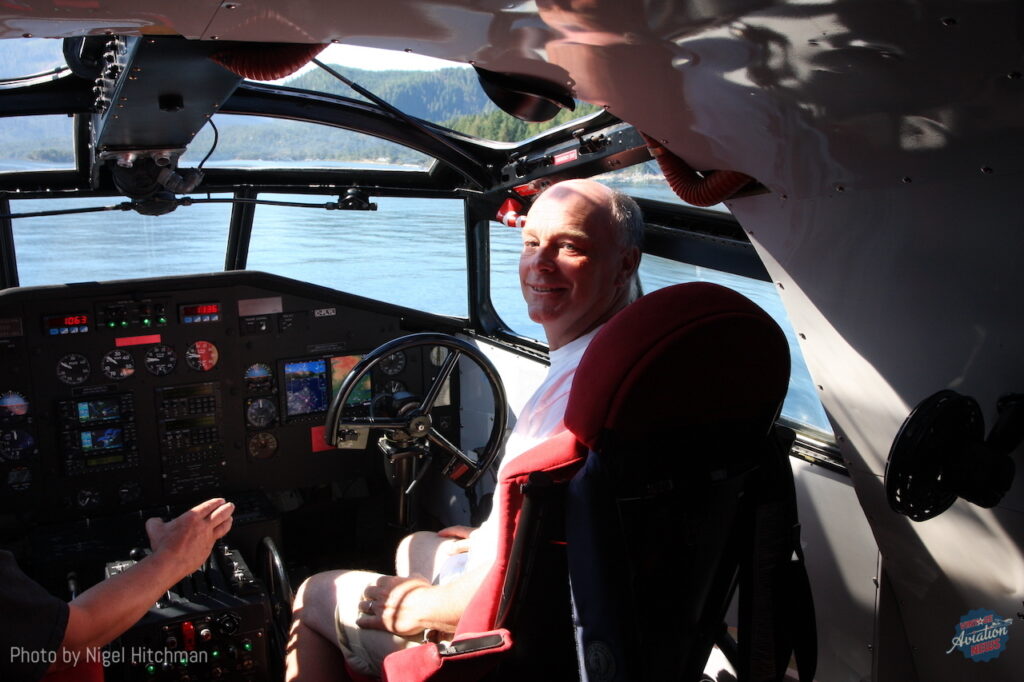
I flew into Victoria/Sydney and had a great look around at the airport there including seeing the Mosquito VR796/C-FHMJ nearing completion of its restoration to fly and the long-stored P-40 RCAF 1034 amongst many other interesting aircraft. The objective then was to drive up to Port Hardy and try to get a flight in one of the Pacific Coastal Grumman G.21 Goose which was still operating on scheduled services.
Having spent the night in Nanaimo, it was a beautiful day the next morning and I decided I really should call in at Sproat Lake on the way and take some photos of the two Martin Mars while the sun was shining, rather than going on the way back as I originally had planned. I decided to go to the Coulson base first just to see if anything was happening, rather than the other side of the lake where the sun was on the right side and I’d heard you could get a local boat company to take you out on the lake.
Driving up to the gate, it was open, although there was a sign saying no public tours, I figured they would still be friendly to an aviation enthusiast who had come all the way from England. So I parked my car and started to walk around to where the offices and ramp were when someone approached me and asked if I was there for the ride?! I said, “No, I’ve just come to take some pictures of the Martin Mars if I can, what are you going for a ride in?” I thought it was probably a boat trip or something as I knew from various other people that they never gave rides in the Mars.
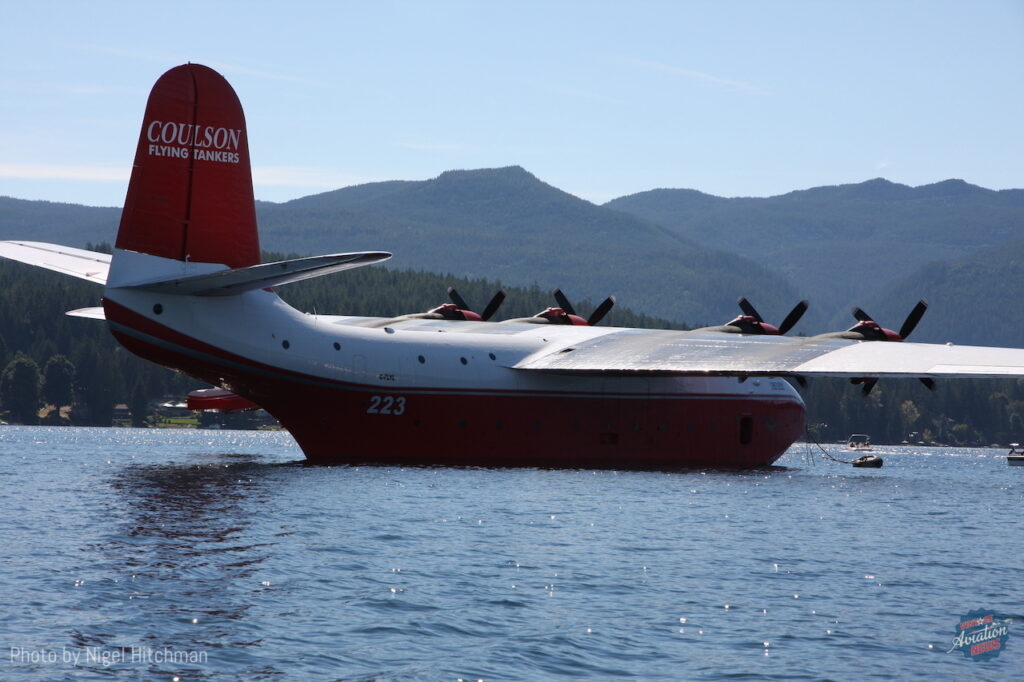
“Oh in the Martin Mars,” he said, “Two couples won a flight in a charity auction, one couple is already here, we are just waiting for the others to arrive, they should be here by now”
“Lucky them,” I said, “Well it will be great to see it flying, that will be fantastic”
I’d only seen the Mars previously when they were both out on the lake back in 1989. Seeing one fly would be a real treat! The guy explained that he was a ground engineer, he used to be a flight engineer but didn’t like the deployments away, so worked on the ground at the base, we chatted a little about Mars, their operation, and my trip and then after about 10 minutes, he decided to go and find the crew and see what they were going to do. As we approached the offices, the crew came out and said they weren’t going to wait any longer, the other passengers were more than 30 minutes late and obviously weren’t going to come, so they were going to fly and offer the other two seats to a local policewoman who they knew and who was there with her son to watch. So I asked if I could come out on the boat with them and get some pictures from the boat, this was agreed and we were all very happy.
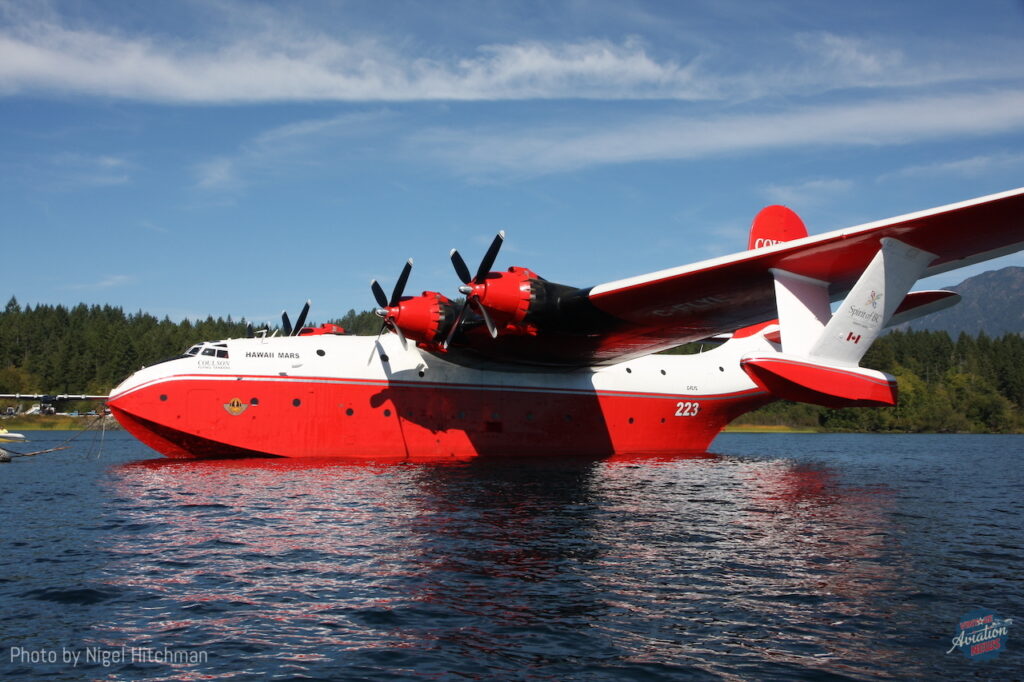
Halfway out in the boat, the woman said she wasn’t sure her son would be ok going, as he was claustrophobic. The crew said it shouldn’t be a problem, the cockpit is very big and roomy, and he will be fine once he gets in there. So we got to the front loading door and the flight crew and flight engineers went to get onboard with the four passengers, but before all the crew was on board the woman and her son came back out and said he really didn’t want to go, so they were going back onto the boat. Then one of the flight engineers said to me “Well if they don’t want to go, you had better get in!” I didn’t ask twice and was soon going up the steps into the cockpit!
Amazing! A dream come true! I was shown to my seat, one of four seats in the large cockpit on the right side behind the flight crew with the two flight engineers sitting in front of their panels on the left side.
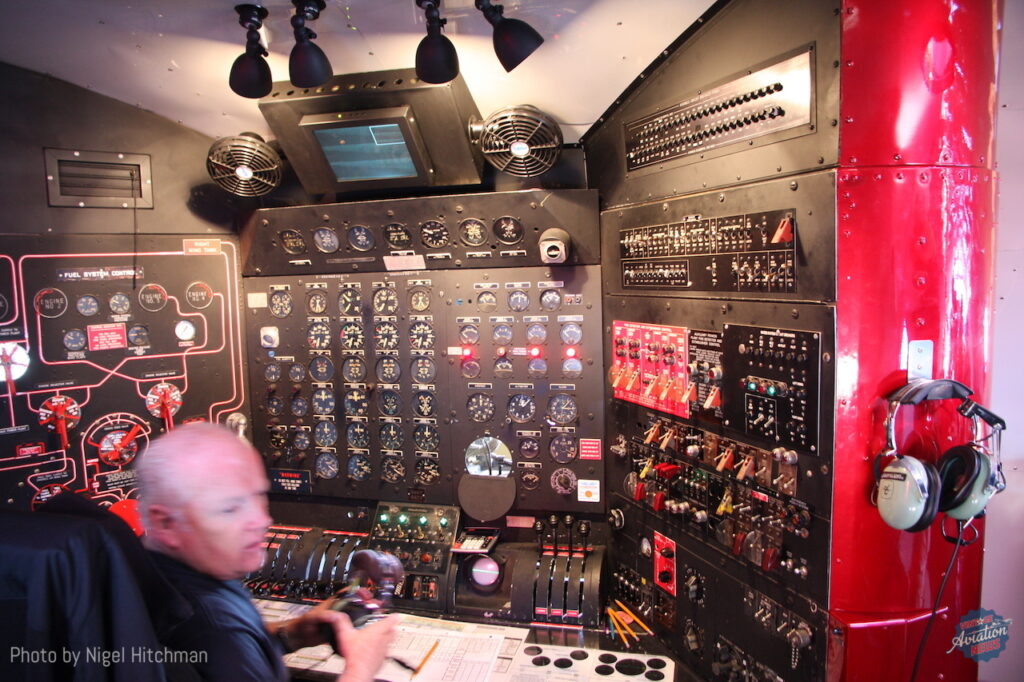
A quick introduction to the crew and the safety brief and then it was time to start the engines. With number 2 and 3 started, we were untied from the buoy and started to taxi while number 1 and 4 were started, but engine number 4 failed to start after several attempts. So we taxied back to the buoy and tied up again and shut down all the engines. OH well, at least I got to taxi in the Mars I thought, that was a lot more than I expected!
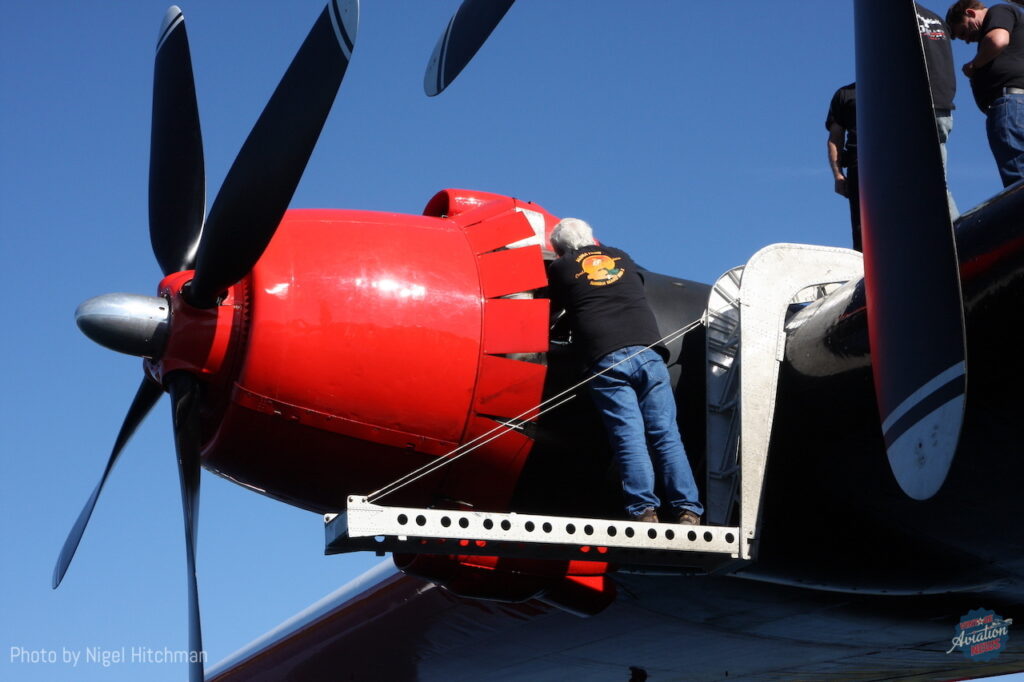
But then the crew said they would have a look at engine 4 and it would probably be a quick fix, they thought it was a malfunction of a component of the starting system. So while the engineers went out on the wing and down in the cradle to work on the engine, Peter Killin one of the two pilots took us for a tour around the rest of the aircraft into the massive interior and to see where the water tanks were. We also got to look more at the cockpit controls and an explanation of some of the features of the flight deck which featured a modern EFIS Primary flight display and an excellent navigation display with GPS terrain mapping, very useful for when fighting fires flying at low levels in mountainous terrain.
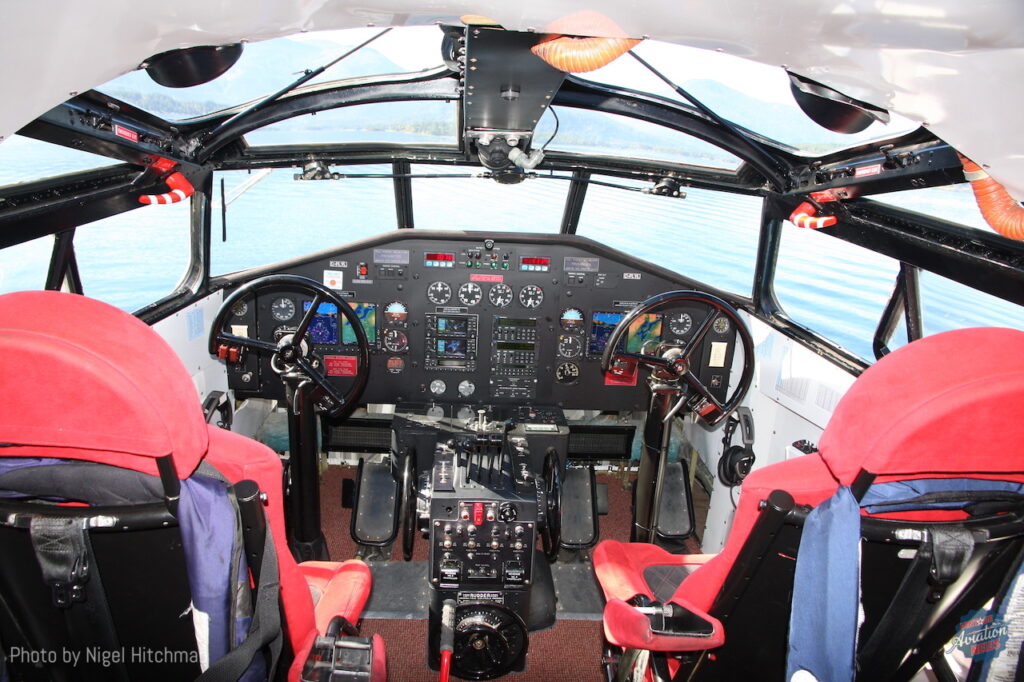
Soon the engineers were closing the engine cowling and getting back inside the aircraft and we were ready to start again. This time all four engines started perfectly and we were soon taxiing around the lake warming up the engines, checking magnetos and propeller operation, and doing the rest of the preflight checks. It was amazing looking up out of a hatch in the cockpit at all four Wright R-3350 engines running up as we taxied around. Soon we were all ready, hatches and doors closed and off we went, power set, up on the step, and then a very smooth take-off and slow climb as we flew up the lake. Magic!!
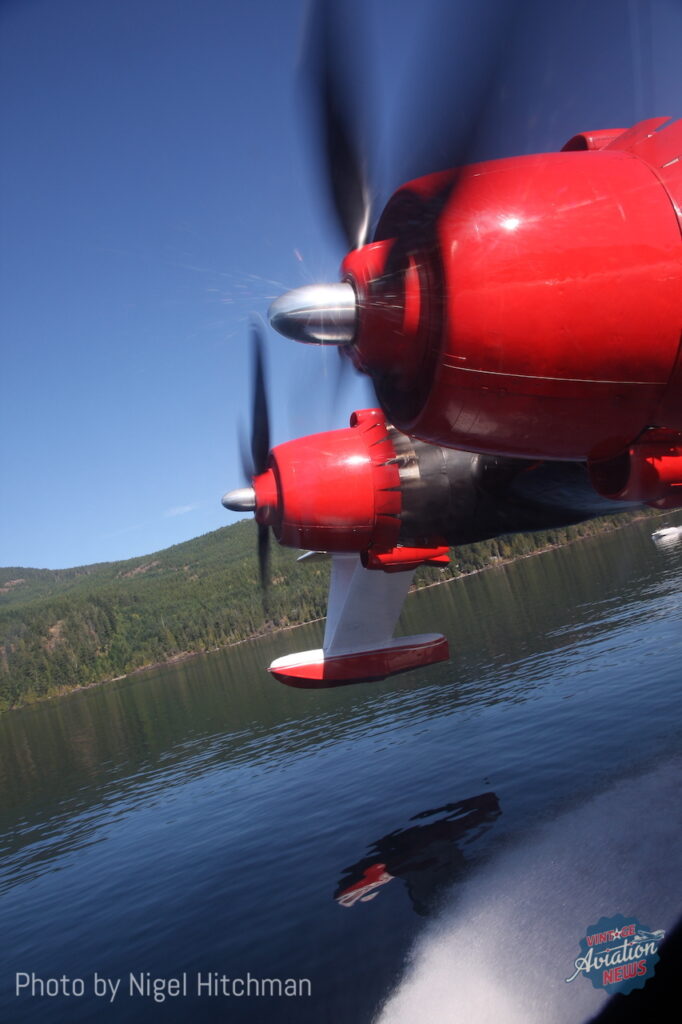
As soon as we were settled in the climb we were invited to get up and move around the cockpit to observe. My headset lead was quite short, so I took the headset off so as to be able to look over the pilots. That didn’t last long, it was so loud, way louder than anything I’d ever experienced before, including some flights in warbirds like the B-17 and B-24, where we walked around with no headset, so I went back to get my headset and unplugged it and just wore it for ear protection.
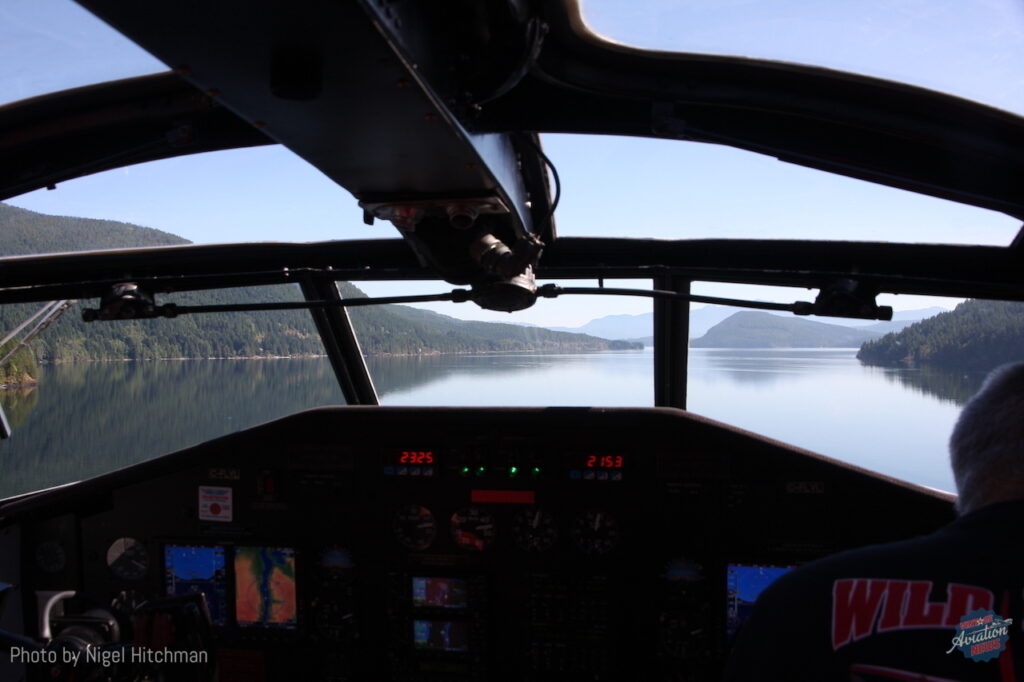
We did a circuit around the lake and then came back to land on the water again, remaining “on the step” to do a water pickup, we could see the tank volumes on the two gauges quickly increasing and soon they were up to around 2300 gallons each side, only two thirds of their full amount around 3500 gallons each and we were airborne again. Another turn and it was back for a water drop over the lake. After that we visited the local town of Port Alberni and the locations where the couple lived and worked before coming back into land.
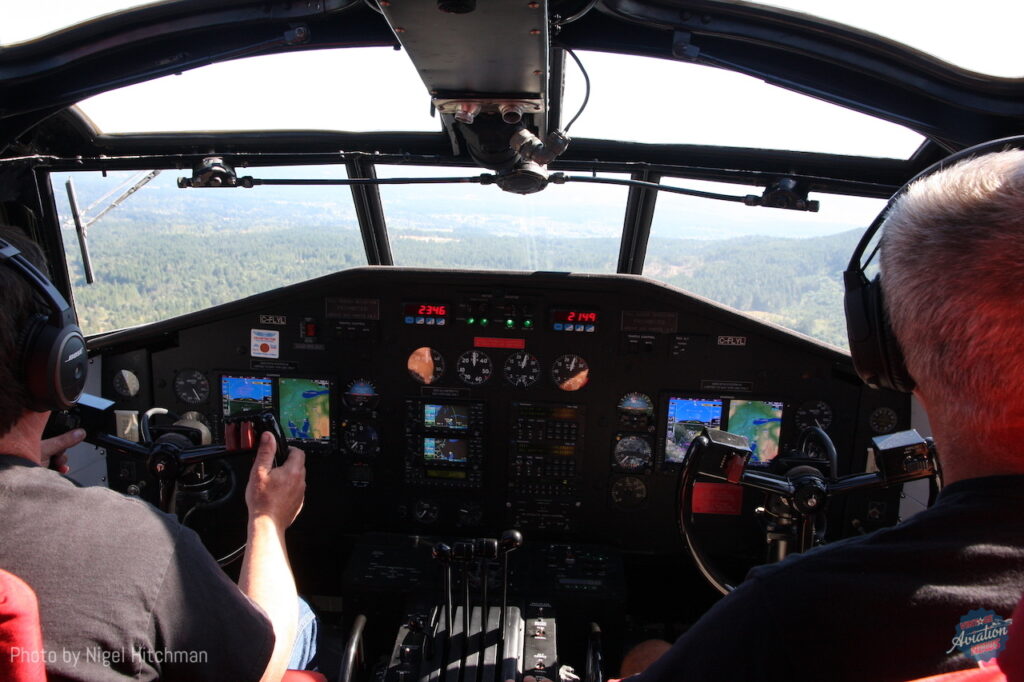
Approaching the lake for the water pickup we were at 90kts with some power, then increasing power after touchdown to stay on the step, and on the lake we were skimming along at 110kts with 45 inches of manifold pressure and around 2400rpm before taking off again. Cruising around at 130kt and 30 inches, the highest speed I saw was 140kt. The final approach to land was 85kt and quite a short run for the final landing.
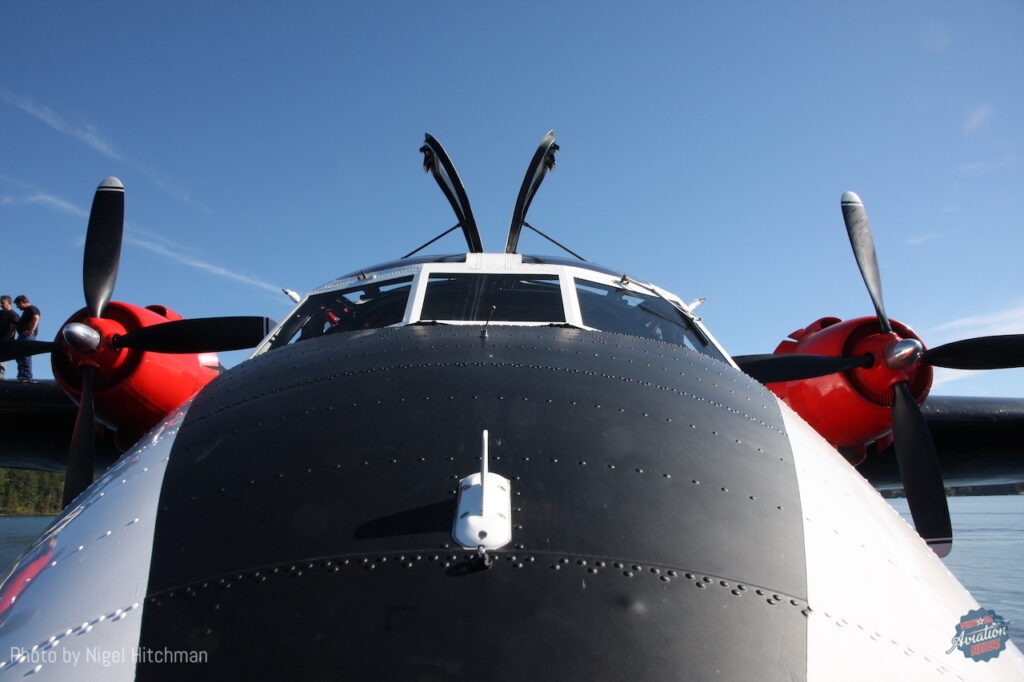
What a fabulous experience, I certainly never expected that! Then it was back in the boat, a quick circuit of Hawaii Mars to get some pictures, and then back to the dock. We then had a look at Philippine Mars which was in the process of of being painted back in US Navy colors ready for its journey to the US Naval Aviation Museum at Pensacola which they said would likely take place in 2013 and they were planning the route and where to stop. All 4 engines were removed for overhaul ready for the trip and I think the plan was then to remove the overhauled engines once at Pensacola and replace them with time-expired examples. But that all never happened reportedly due to US Congress budget sequestration.
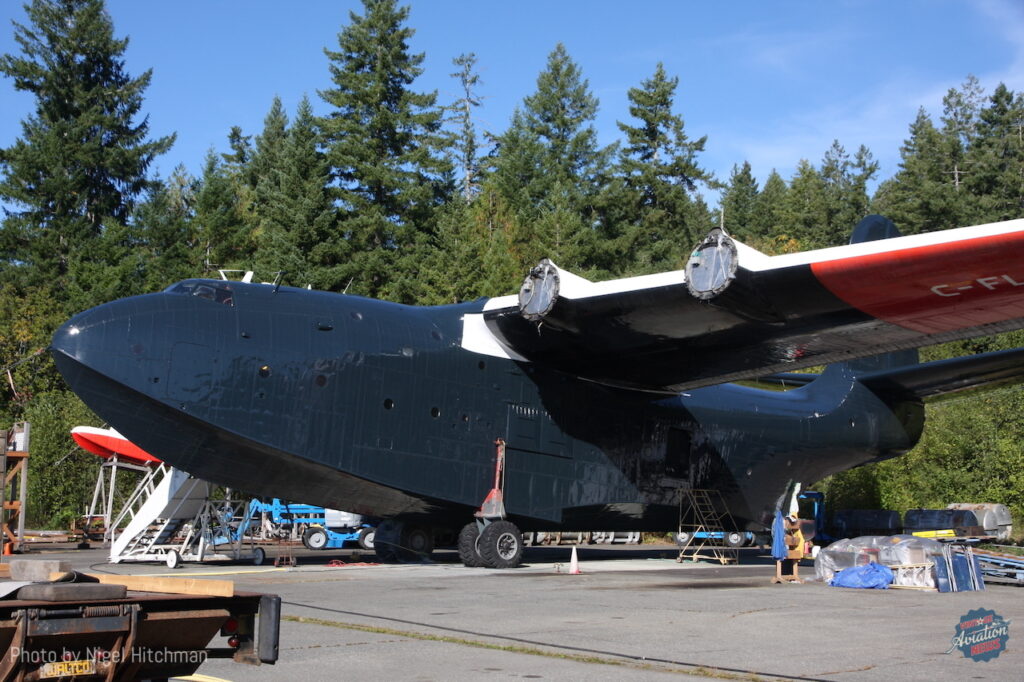
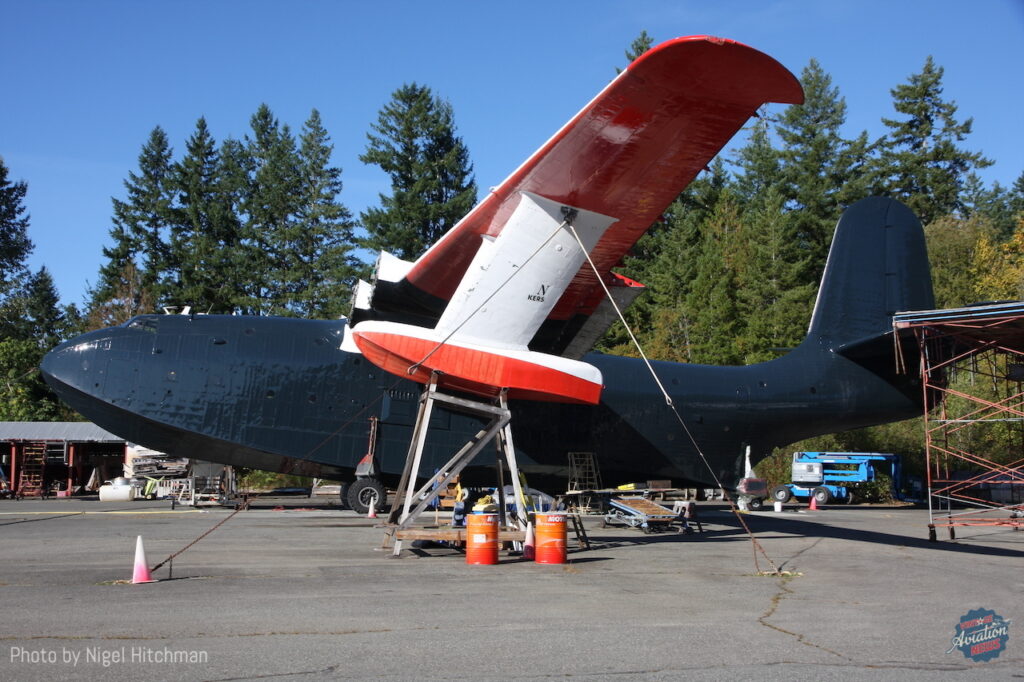
I thanked all the crew and then took Peter Killin across to Alberni Valley Regional Airport where he flew his Cessna 140 back to his home airfield elsewhere on Vancouver Island. Then I continued north to Campbell River and eventually to Port Hardy that evening. The next day was thick fog, so I never did get a Grumman Goose ride! I still hadn’t seen the Martin Mars flying but that was resolved with their fabulous visit to Oshkosh, where I think I saw five flights and several water take-offs and landings.
What a trip and so unexpected, so lucky, thanks to all at Coulson for their great hospitality!
Hawaii Mars had its last full operational year in 2013 and was re-activated in 2015 for training of Chinese pilots ready to fly their AVIC AG600 and following much public outcry was awarded a 30-day contract for firefighting later in the year. In 2016 it was flown to EAA Oshkosh where it landed on Lake Winnebago and participated in the airshow doing a water drop and flypast each day, in the hope that there might be a sale, but that was not forthcoming. Having successfully flown in the Friday display, the next time it flew they rejected take-off due to engine indications and hit some underwater rocks which damaged the hull. The next few days were spent doing an underwater temporary repair before it was flown back to Sproat Lake where it was permanently repaired, but I believe not flown again. It will now be put back in the water again a final time later in 2024 for crew training and then some final flyovers of the local communities where it served for many years before landing near the seaplane ramp at Victoria/Sydney Airport where it will be brought ashore for the last time and taken to the British Columbia Aviation Museum. Peter Killin will be one of the crew members for that last flight.
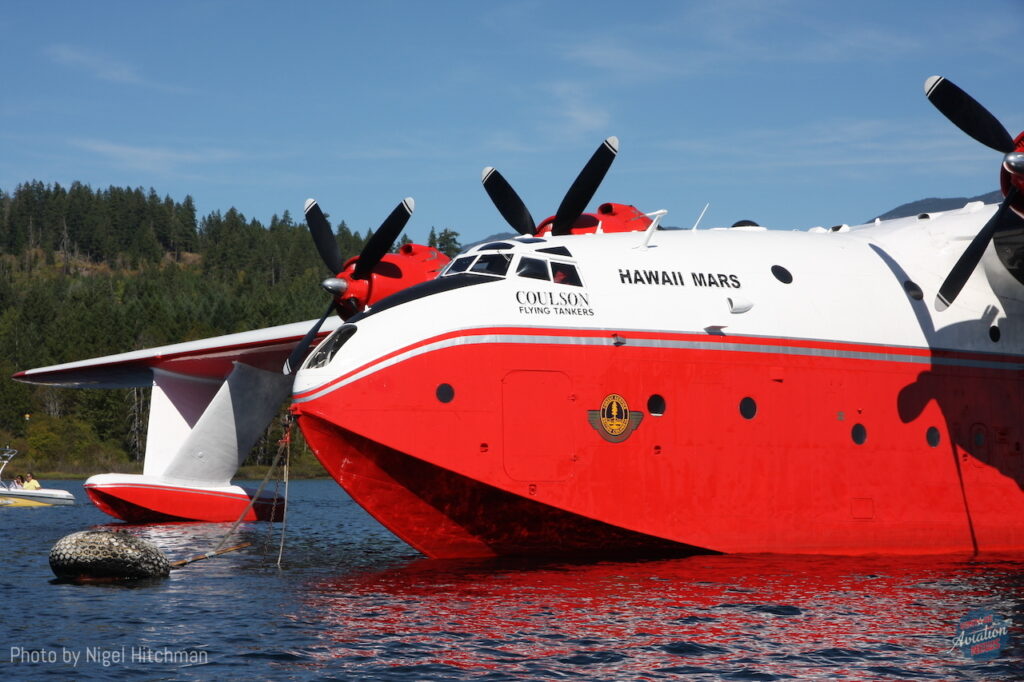
Philippine Mars never received the updated cockpit and hasn’t been used operationally since 2007 (it may have not flown since then, although was ready to fly in 2013) It won’t be flying again and will go to the Pima Museum by surface means.
